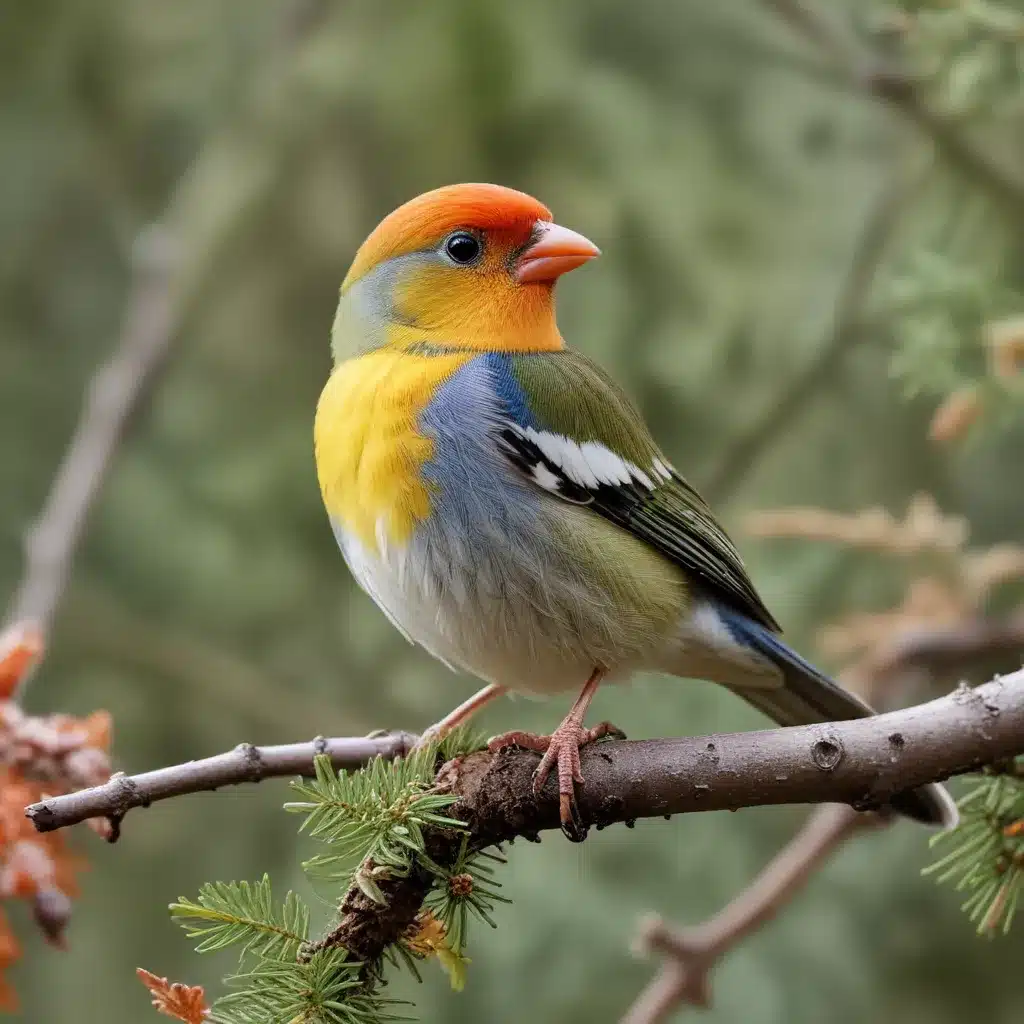
Avian Species and Habitats
As an experienced avian caretaker and expert, I’m often asked about the unique needs and behaviors of birds during different seasons. While some common myths and misconceptions still persist, the truth is that birds are highly adaptable creatures that require specialized care and attention year-round.
Common Bird Populations
One of the most pervasive myths is that certain bird species “disappear” or “migrate away” during the colder months. In reality, many of our beloved backyard birds simply adjust their behaviors and routines to survive the harsher conditions. For example, some species like chickadees and nuthatches may form larger flocks to stay warm, while others like juncos and finches may move closer to human habitats to take advantage of supplemental food sources.
Migratory Bird Patterns
It’s true that numerous avian species do engage in long-distance migrations, traveling thousands of miles to escape the winter weather. However, this is not a universal trait across all birds. Even within the same species, some individuals may migrate while others remain in their breeding grounds. Factors like age, sex, and even individual preference can influence a bird’s migratory behavior.
Seasonal Environmental Factors
The changing seasons bring about significant shifts in temperature, precipitation, and available resources. These environmental factors can greatly impact a bird’s feeding, nesting, and survival strategies. While some species may be more resilient to these changes, all birds require careful monitoring and adjustment of their care routines to ensure their well-being.
Nutritional Needs for Birds
One of the most common misconceptions about seasonal bird care is the belief that birds can simply rely on natural food sources or that rainwater is sufficient for their hydration needs. In reality, providing the right nutrition and water access is crucial for a bird’s health and survival, regardless of the time of year.
Feeders and Supplementary Foods
While birds may be able to forage for some of their dietary requirements in the wild, supplementary feeding can be a lifeline, especially during the harsher winter months. Ensuring a well-stocked and diverse array of feeders can help sustain local bird populations, providing them with the essential nutrients they need to thrive.
Dietary Requirements by Species
Different bird species have unique dietary needs and preferences. Some may be primarily seed-eaters, while others may rely more on insects, nectar, or even small rodents. Understanding the specific nutritional requirements of the birds in your area can help you tailor your feeding efforts to their individual needs.
Water and Hydration
Contrary to the belief that rainwater is sufficient, birds require a consistent and reliable source of clean drinking water throughout the year. During periods of drought or extreme temperatures, providing a heated birdbath or other water features can be crucial for their survival and well-being.
Nesting and Breeding Behaviors
Seasonal changes can also significantly impact a bird’s nesting and breeding behaviors, which are essential for their continued survival and population growth. Misconceptions about these critical life stages can lead to unintended consequences.
Nesting Materials and Sites
Birds have evolved to utilize a variety of natural materials for their nests, from twigs and leaves to animal fur and feathers. While it may be tempting to “help” by providing supplementary nesting materials, it’s important to avoid disrupting their natural instincts and behaviors.
Chick Development and Care
The care and nurturing of chicks is a delicate and complex process that varies greatly among different avian species. Myths about a bird’s “abandonment” of their young or the belief that human intervention is always necessary can lead to more harm than good.
Fledgling Transitions
As young birds transition from the nest to independence, they may exhibit behaviors that can be misinterpreted by well-meaning observers. Resisting the urge to “rescue” these fledglings and allowing them to naturally develop their skills is crucial for their successful integration into the wild.
Health and Safety Considerations
Seasonal changes can also introduce new health and safety risks for birds, and understanding these factors is essential for their protection and care.
Hazards and Predators
While birds face a variety of natural predators year-round, certain seasons may bring about increased threats, such as the presence of migratory predators or the scarcity of resources leading to heightened competition. Recognizing these seasonal patterns and taking appropriate precautions can help safeguard local bird populations.
Illnesses and Injuries
Birds can be susceptible to a range of illnesses and injuries, some of which may be exacerbated by environmental stressors or changes in resource availability. Prompt identification and professional treatment of these issues are crucial for a bird’s recovery and long-term well-being.
Rehabilitation and Rescue
In the event of an injured or orphaned bird, it’s essential to resist the temptation to “rescue” the animal yourself and instead contact a licensed wildlife rehabilitator. These professionals are trained to provide the specialized care and treatment necessary for a bird’s successful rehabilitation and eventual release back into the wild.
At Mika Birds Farm, we are committed to educating our community about the unique needs and challenges faced by our feathered friends throughout the seasons. By debunking common myths and providing accurate, research-based information, we aim to empower our fellow avian enthusiasts to become responsible stewards of the natural world.
Remember, caring for birds is a year-round endeavor that requires a deep understanding of their behaviors, habitats, and environmental needs. By staying informed and adapting our practices to the changing seasons, we can ensure the continued survival and thriving of our avian populations. Visit Mika Birds Farm to learn more about our avian care resources and community initiatives.


